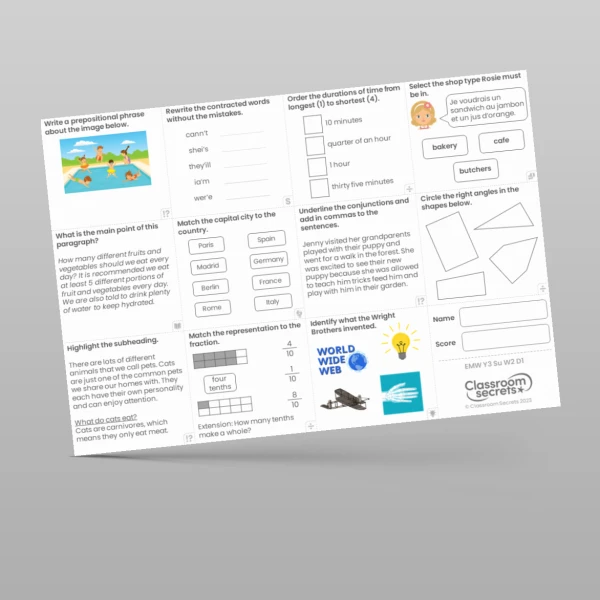

Use this Year 3 Recognising Direct Speech Homework resource to see what your children can remember when working at home.This worksheet is differentiated three ways to give your children the correct level of challenge and provides two varied fluency questions and one reasoning or application question to work through.
It could also be completed in class either independently, in pairs or with adult support. A full answer sheet is provided to make marking quicker.
Curriculum Objectives
- Introduction to inverted commas to punctuate direct speech / Terminology for pupils: direct speech / Terminology for pupils: inverted commas (or ‘speech marks’)
Tags
Punctuation
Spring
3G5.7
Year 3 Speech











